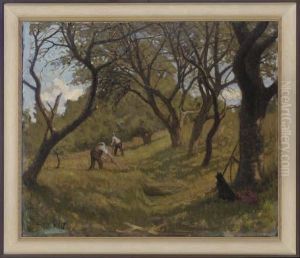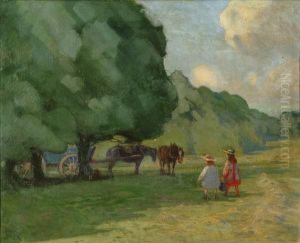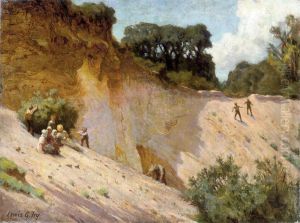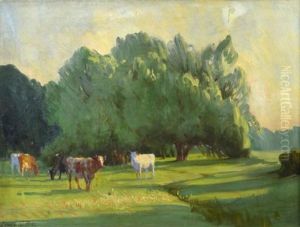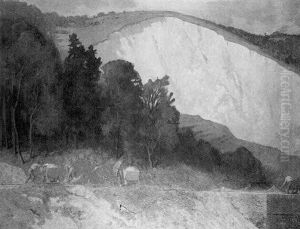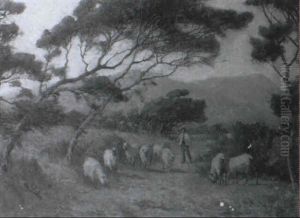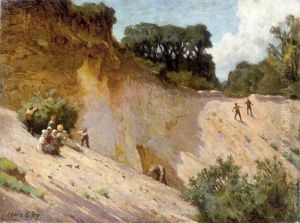Lewis George Fry Paintings
Lewis George Fry, although not widely known today, was a British artist born in 1870. His artistic journey is not extensively documented in the annals of art history, and as such, the details of his life and career are somewhat obscure. He did, however, contribute to the rich tapestry of British art in the late 19th and early 20th centuries.
Fry's artistic style and personal biography have not been as thoroughly researched or celebrated as those of his more famous contemporaries. Nevertheless, he was a part of the artistic movements of his time, likely influenced by the broader trends in European art, such as Impressionism, which was characterized by a focus on light and its changing qualities, unusual visual angles, and the inclusion of movement as a crucial element of human perception and experience.
During his lifetime, Fry would have witnessed significant changes in the art world, including the transition from traditional academic art to more avant-garde movements. The early 20th century was a period of great innovation, with the development of modernist art and the exploration of new techniques and theories. Fry passed away in 1938, leaving behind a legacy that, while it may not have garnered the fame of his peers, still represents an important piece of the cultural fabric of his era.
Unfortunately, due to the limited information available, a more comprehensive biography of Lewis George Fry's life, including his training, major works, exhibitions, and impact on the art world, cannot be provided without further research. He remains one of the many artists whose contributions are acknowledged by specialists and enthusiasts of the period, but whose personal stories and artistic journeys have yet to be fully discovered and appreciated.
